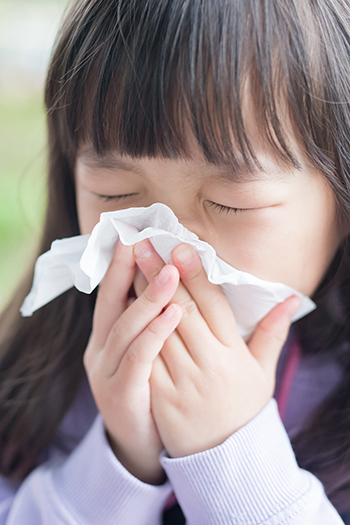
Seasonal Allergies
Now that spring is in the air and the landscape is turning green, your little ones might be experiencing symptoms of seasonal allergies: watery eyes, itchy nose, sneezing and so on. While children don't typically develop seasonal allergies until the ages of 3-5, little ones between the ages of 1-2 can still develop allergies to dust mites and pet dander, according to the Cleveland Clinic.
How do you know if your child is experiencing “hay fever” or simply sick with a cold? There are a few key differences between the two. First, look to see if they have clear, watery mucus. This is a hallmark of an allergy response, as opposed to a cold when mucus may be thicker and darker in color. Next, pay attention to see if symptoms improve when the child is removed from certain environments. If you go for a ride in the car with the air conditioner on and symptoms clear up, chances are they're dealing with an allergy.
Another red flag that your child may be suffering from an allergy is if either parent has been previously diagnosed with an allergy. While your child may not develop the same type of allergy, they are more likely to develop one. Lastly, itchiness and extended length of time experiencing symptoms can be an indicator for allergy – since colds will typically improve within a few days.
What do you do if you suspect your child has seasonal allergies? First, talk to their pediatrician. They may prescribe simple remedies such as saline nasal sprays or over-the-counter medications that are safe for little ones. Or, if more severe, they may recommend meeting with an allergist for further testing and/or treatment.
Once diagnosed with seasonal allergies, there are simple ways to manage flare-ups from environmental aggressors. The American Academy of Allergies, Asthma and Immunology recommends taking part in outdoor activities later in the day, since pollen levels typically peak between 5:00 – 10:00 a.m. They also suggest changing clothes and showering (or washing hands) after outdoor play whenever possible. Drying bedding and clothes in a dryer instead of hanging outdoors and keeping windows shut with the air conditioner on to prevent the spread of pollen can also make a difference.


